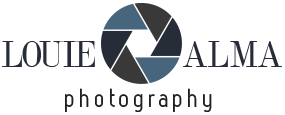How to Fix Photos When Straight Lines Are Askew (VIDEO)
This insightful tutorial from Adorama TV explains how easy it is to compensate for different straight lines in a photo that appear crooked and simply don’t line up. It’s a common problem indoors or out, and the solutions you’ll learn in the video below are both effective and super simple to achieve.
Instructor David Bergman in a versatile NY pro whose impressive portfolio includes celebrity portraits, amazing sports photos, and vibrant images captured on tour at live performances. Today’s 14-minute episode was prompted by a question submitted recently to his unique Ask David Berman website that provides practical answers to reader-submitted questions.
Bergman describes what causes this annoying perspective problem, how to deal with it, and if and why you should really care. You’ll also learn a trick that intentionally emphasizes converging lines for making attention-grabbing creative effects.
As Bergman says, “I like to get perfect symmetry in my photos whenever possible, but sometimes prominent lines don’t appear parallel to each other or to the top and bottom of the frame.” He illustrates this conundrum with a variety of images that are much more effective when they’re thoughtfully aligned.
The culprit is known as the “keystone effect” that results in apparent distortion when the camera is tilted up or down and the image is projected on the sensor at an angle. As he says, “keystoning is more pronounced with wide-angle lenses but you can see it at any focal length.”
One familiar example occurs in cityscape scenes that requires aiming the camera upward to include prominent tall buildings in the frame. Landscape images are likewise affected when big trees become the issue. In either case, these important elements tilt inward toward the top and eventually converge.
Of course, what you really want to know is the best way to repair these distracting perspective errors. And that’s exactly what Bergman demonstrates how to do as the lesson proceeds—along with the aforementioned creative tricks for accentuating lines that are askew.
There’s much more to learn on the instructional Adorama TV YouTube channel. And be sure the visit the Ask David Bergman website where you can submit questions of your own and peruse previous episodes that reveal Bergman’s expert advice.




